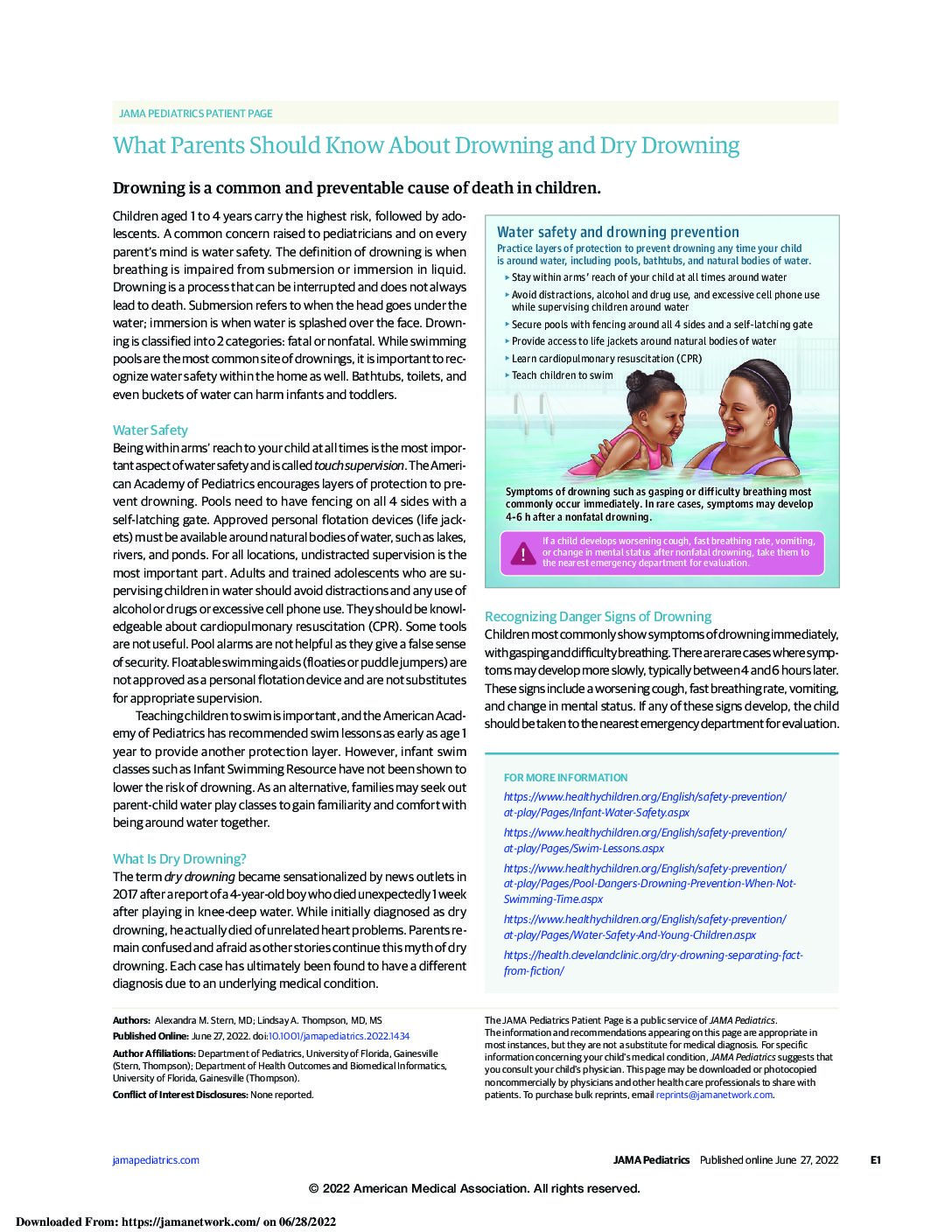Drowning is a common and preventable cause of death in children.
Children aged 1 to 4 years carry the highest risk, followed by adolescents. A common concern raised to pediatricians and on every parent’s mind is water safety. The definition of drowning is when breathing is impaired from submersion or immersion in liquid. Drowning is a process that can be interrupted and does not always lead to death. Submersion refers to when the head goes under the water; immersion is when water is splashed over the face. Drowning is classified into 2 categories: fatal or nonfatal. While swimming pools are the most common site of drownings, it is important to recognize water safety within the home as well. Bathtubs, toilets, and even buckets of water can harm infants and toddlers.
Water Safety
Being within arms’ reach to your child at all times is the most important aspect of water safety and is called touch supervision. The American Academy of Pediatrics encourages layers of protection to prevent drowning. Pools need to have fencing on all 4 sides with a self-latching gate. Approved personal flotation devices (life jackets) must be available around natural bodies of water, such as lakes, rivers, and ponds. For all locations, undistracted supervision is the most important part. Adults and trained adolescents who are supervising children in water should avoid distractions and any use of alcohol or drugs or excessive cell phone use. They should be knowledgeable about cardiopulmonary resuscitation (CPR). Some tools are not useful. Pool alarms are not helpful as they give a false sense of security. Floatable swimming aids (floaties or puddle jumpers) are not approved as a personal flotation device and are not substitutes for appropriate supervision.
Read the full article here – JAMA Pediatrics Patient Page

